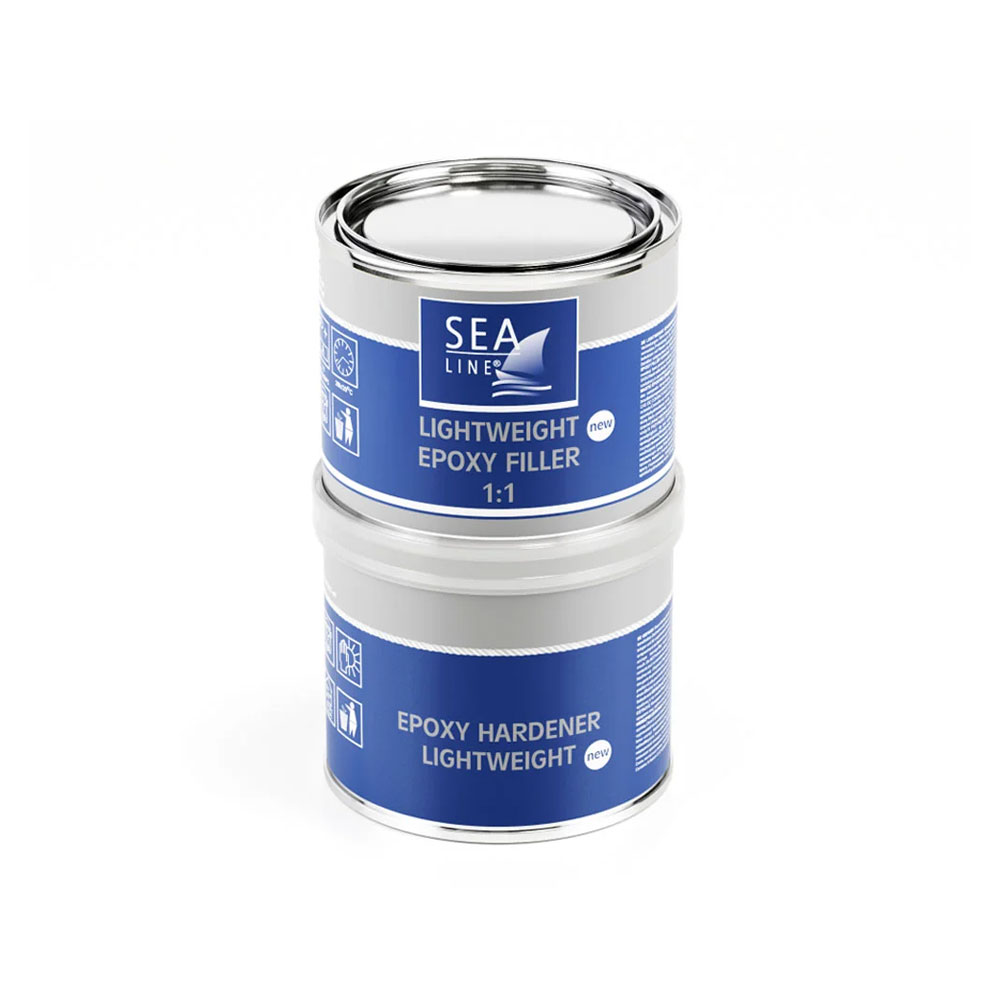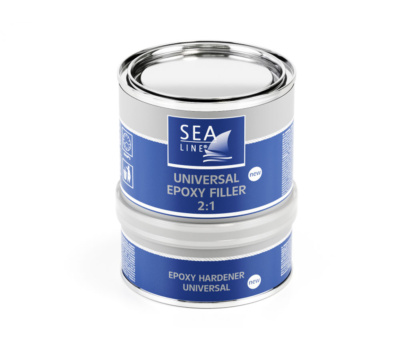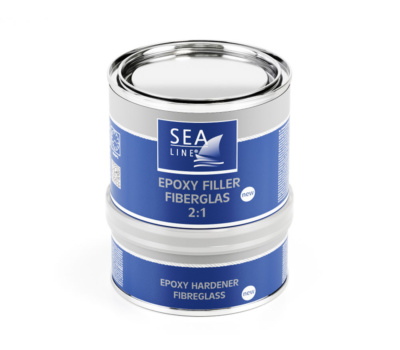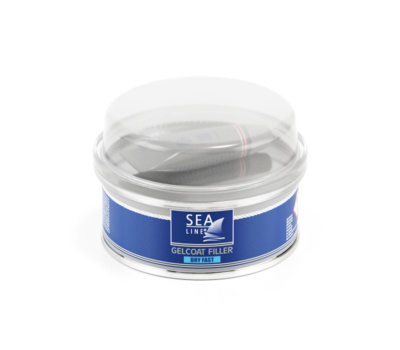Recommended for large areas due to low own weight
| Capacity | Code |
|---|---|
| 750 ml | 12202 |
| 7,5 l | 12288 |

| Type | laminate, wood, stell, aluminium |
| Place | above and below waterline |
| Function | large areas |
| Weight | 1l = 700 g |
| Aplication | putty knife |
| Kolor | off white |

Epoxy fillers are primarily the only fillers recommended for use on hull components constantly immersed

Epoxy fillers, including fiberglass filler, are primarily the only fillers truly recommended for use both

Gelcoat Filler is very fast hard and easy in use.
There is a possibility of thinning antifouling, but we do not recommend this procedure due to the risk of reducing the effectiveness of the paint. If it is necessary to thin the antifouling paint, it is recommended to dilute it to a maximum of 0-5% (by volume).